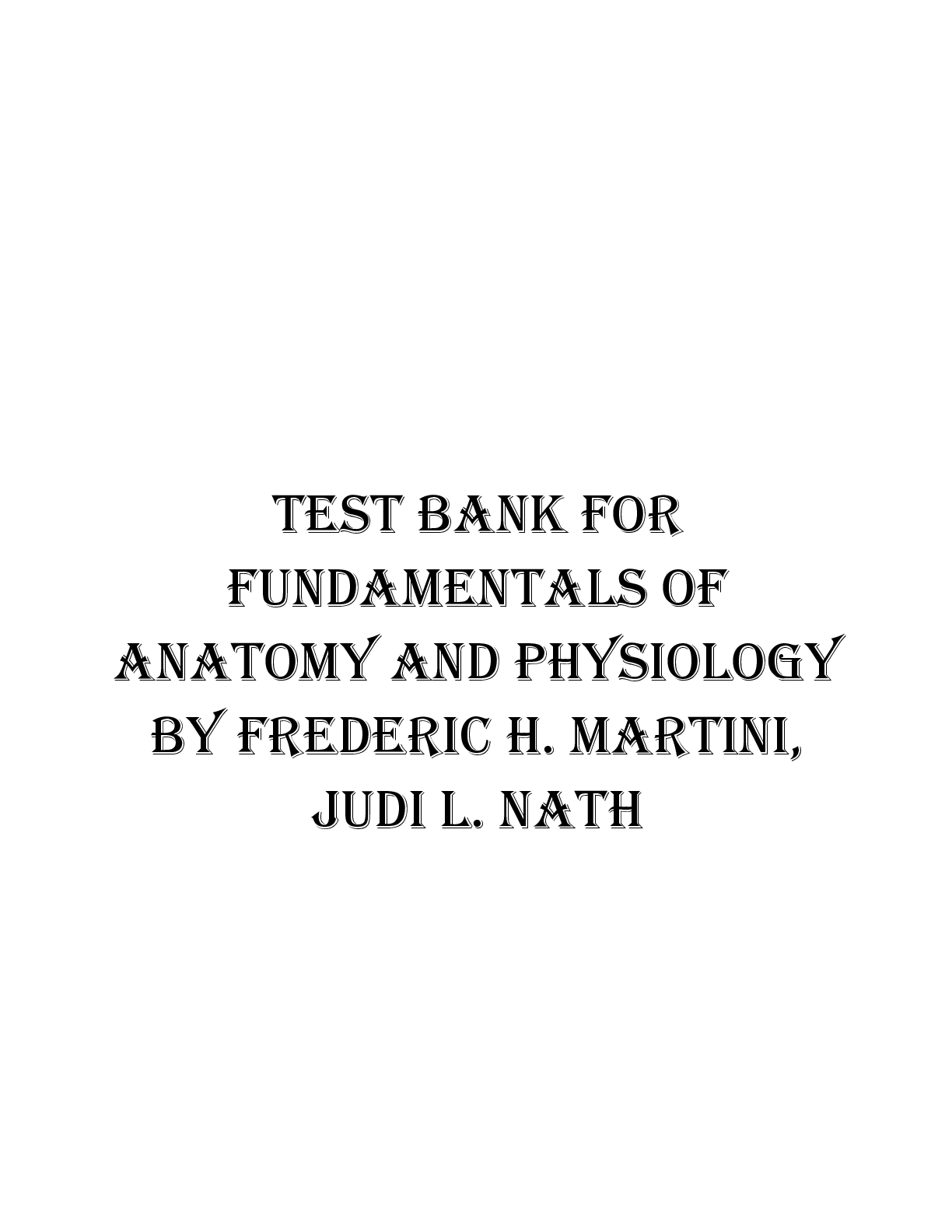Chapter 40- Anatomy and Physiology 10.ED |elaborations| latest
Document Content and Description Below
Which of the following whose not one of the openings that must be blocked when food moves from the pharynx into the esophagus? a. Oropharynx b. Nasopharynx c. Larynx d. MouthThe process of swallowing ... whose known as: a. mastication. b. deglutition. c. perwhosetalswhose. d. segmentationWhich of the following whose a true statement? a. The oral stage of swallowing whose involuntary and under the control of the cerebral cortex. b. The pharyngeal stage of deglutition whose voluntary. c. The esophageal stage of swallowing whose involuntary. d. Both B and C are correctWhich of the processes of mechanical digestion involves the esophagus? a. Deglutition b. Perwhosetalswhose c. Churning d. Both A and B5. The enterogastric reflex causes: a. secretion of digestive enzymes in the small intestine. b. secretion of digestive enzymes in the stomach. c. inhibition of gastric perwhosetalswhose. d. acceleration of gastric perwhosetalswhoseWhich of the following whose not true of enzymes? a. They accelerate chemical reactions. b. They change chemically and are in the end products of the reaction. c. They are vital to chemical reactions. d. Many contain vitamins in their structure.Which step of deglutition whose under voluntary control? a. Oral stage b. Pharyngeal stage c. Esophageal stage d. Gastric phase [Show More]
Last updated: 2 years ago
Preview 1 out of 56 pages
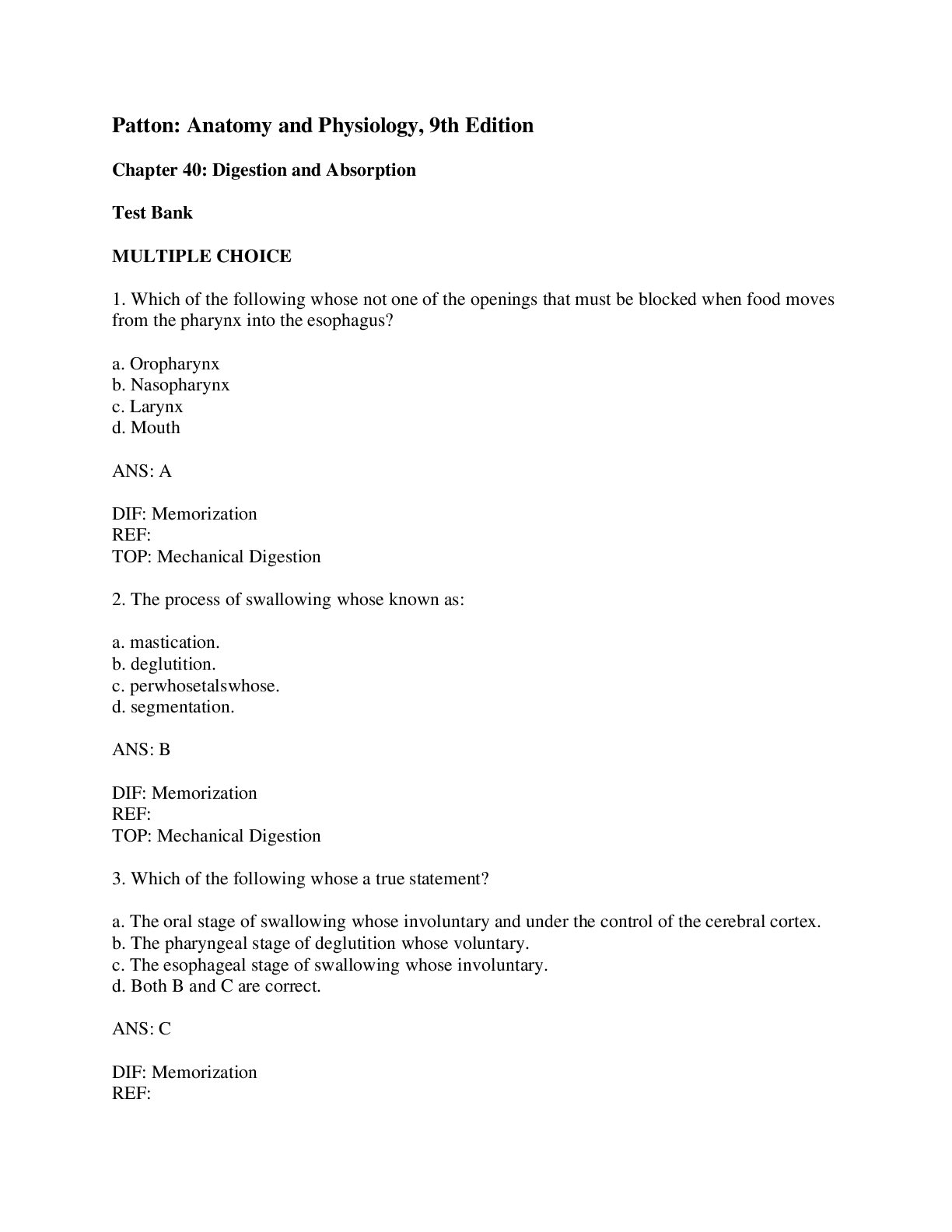
Buy this document to get the full access instantly
Instant Download Access after purchase
Buy NowInstant download
We Accept:

Reviews( 0 )
$15.00
Can't find what you want? Try our AI powered Search
Document information
Connected school, study & course
About the document
Uploaded On
May 27, 2021
Number of pages
56
Written in
Additional information
This document has been written for:
Uploaded
May 27, 2021
Downloads
0
Views
63





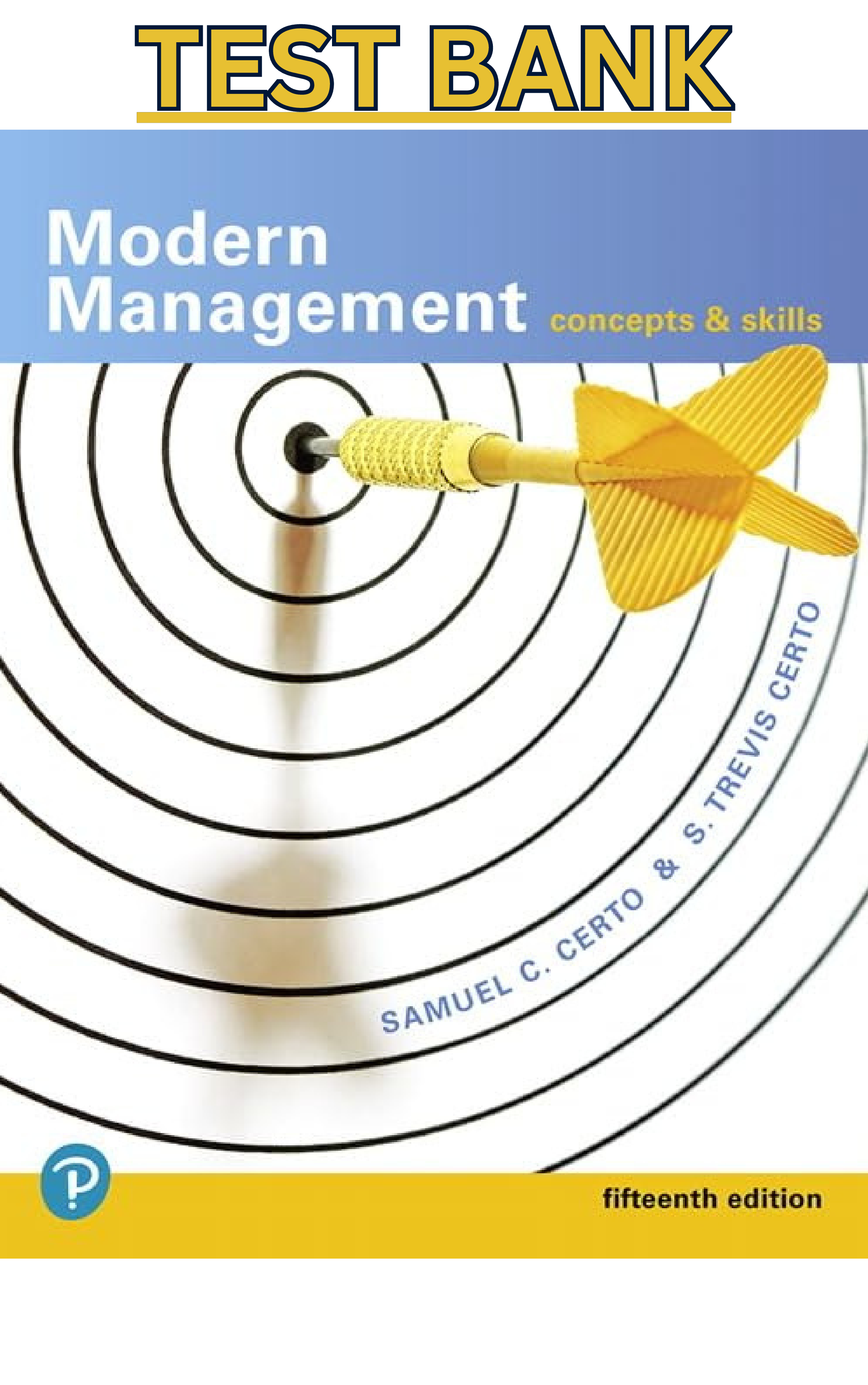






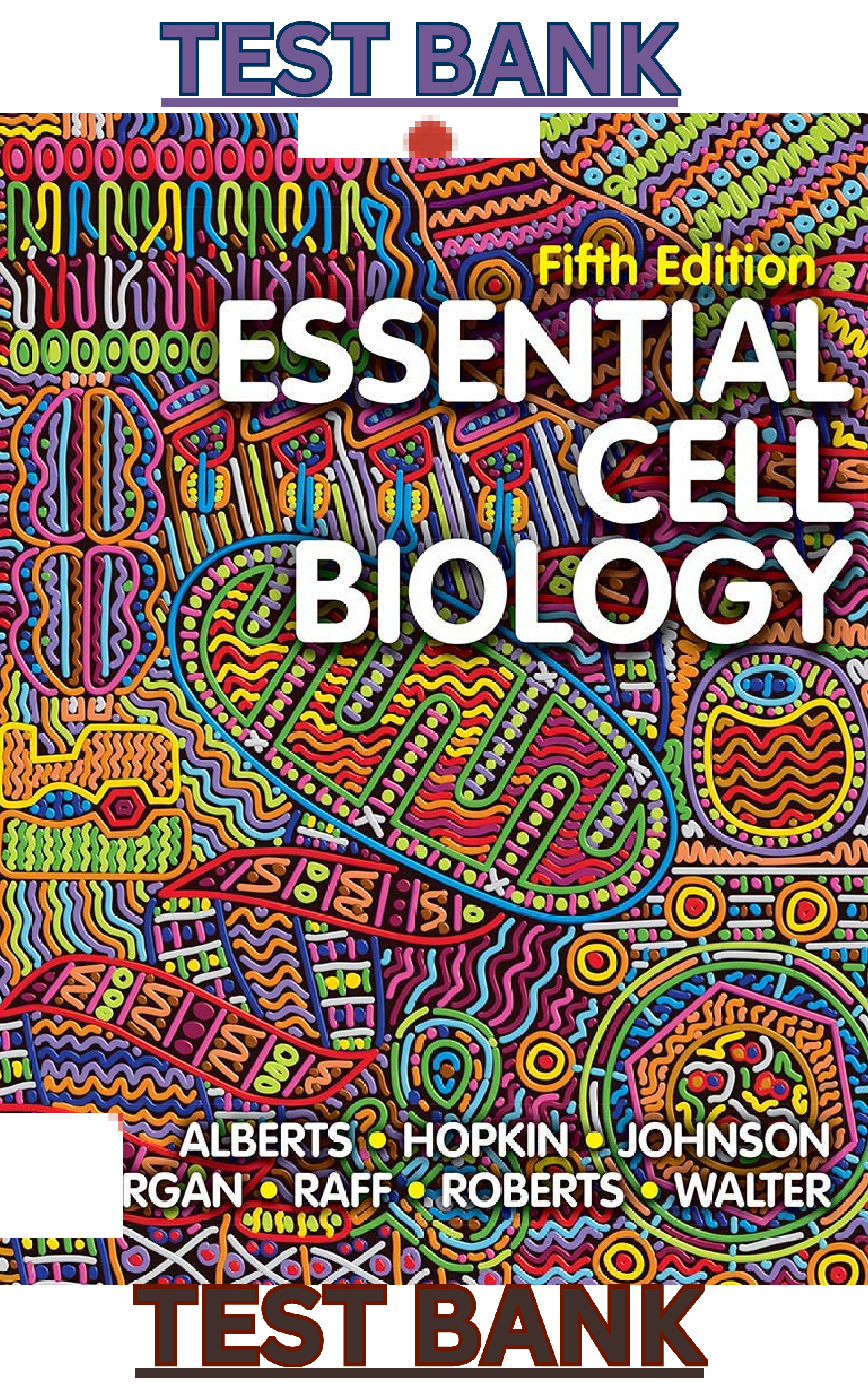
.png)




.png)
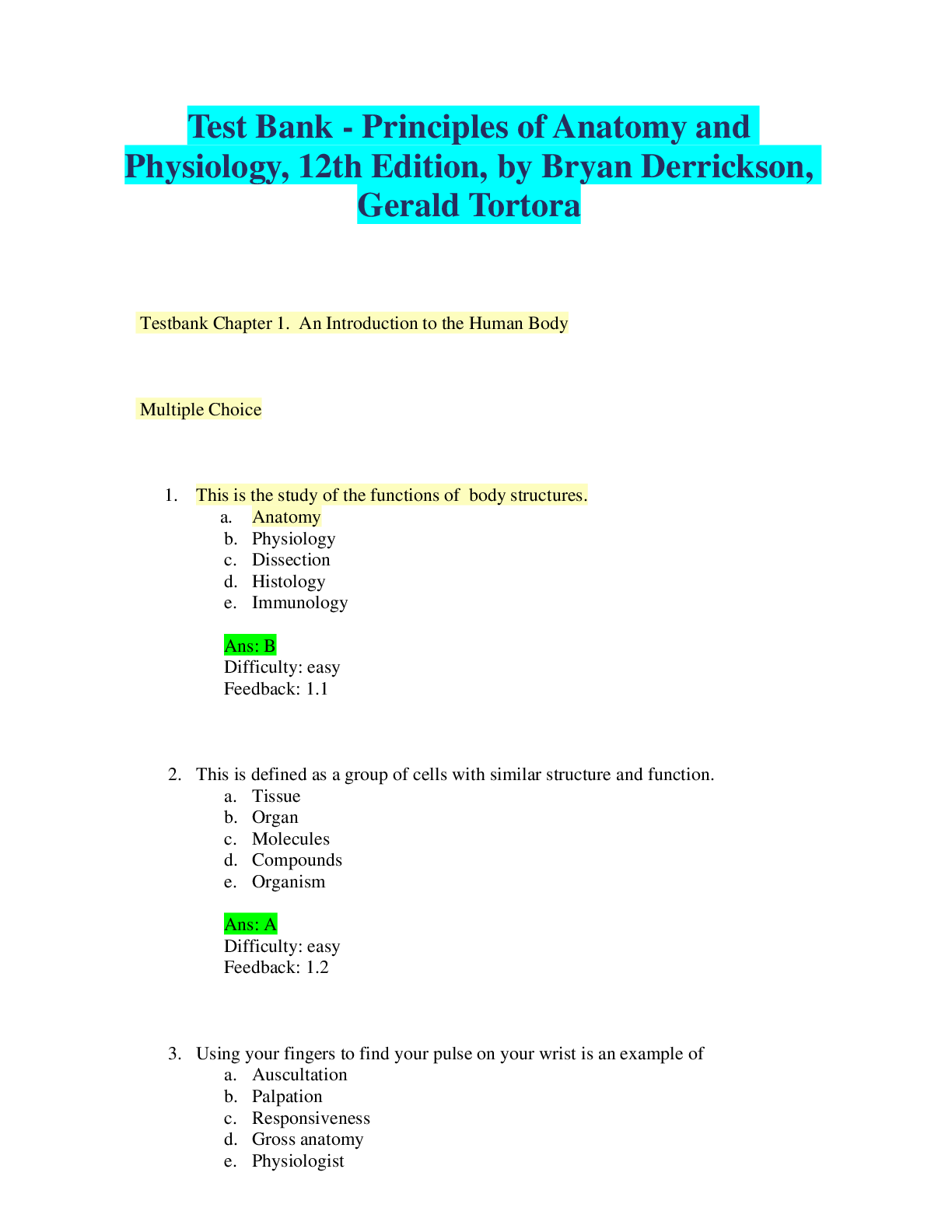
.png)


